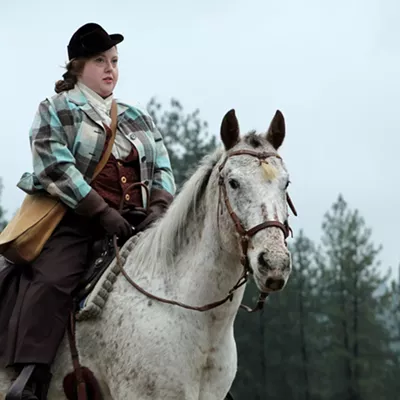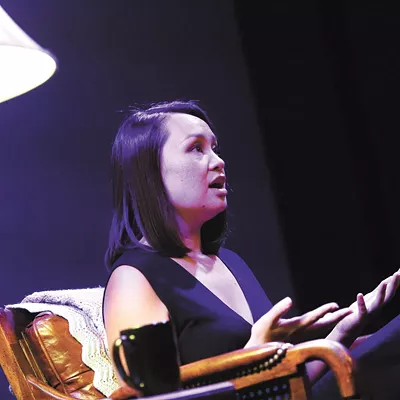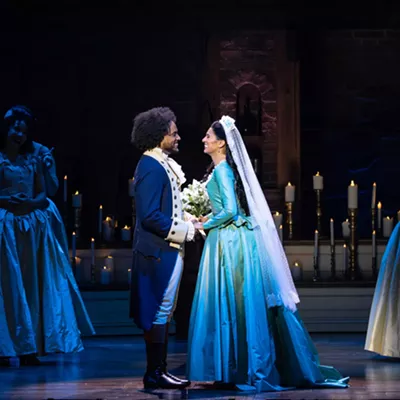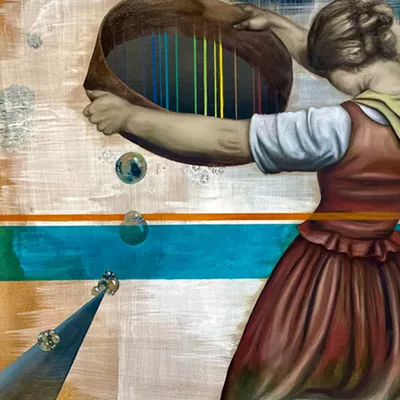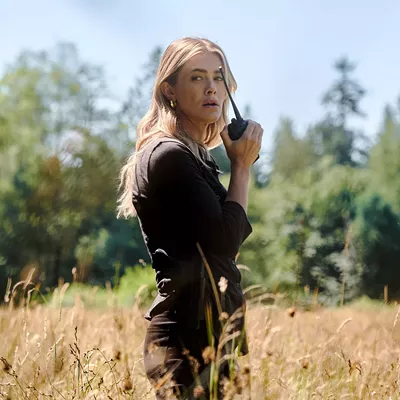These days the artist Mark Rothko's fame rests primarily on his paintings of soft-edged rectangles of complementary and contrasting colors. In 1958, when these distinctive and evocative "color field" paintings were the talk of the art world, he received a commission to create a series of murals for the swanky Four Seasons restaurant in the brand-new Seagram Building in New York City.
The commission could be seen as a nod to Rothko's growing stature at the time. The 38-story skyscraper was already associated with celebrity architects and captains of industry, having been financed by the multinational beverage conglomerate Seagram's and designed by the pioneering modernist architects Mies van der Rohe and Philip Johnson. Rothko's involvement and his large-scale murals were meant to add to the building's prestige.
Things didn't end well for Seagram's here. Rothko completed three series of paintings but reneged on his contract, purportedly repulsed by the pretentiousness of the restaurant's décor. This sudden turn might have been a little disingenuous, given that Rothko had expressed his contempt for the Four Seasons' diners while his work was in its formative stages. Then again, temperamentality and pique were not unusual traits for Rothko.
The screenwriter (Skyfall, Hugo, Alien: Covenant) and playwright (The View from Golgotha, Peter and Alice) John Logan based his 2009 play Red on this episode in Rothko's life. It features just two roles: Rothko himself and his fictional assistant, Ken. The characters serve, in Dawn Taylor Reinhardt's words, as a "yin and yang" in a debate over artistic purity and creativity.
Taylor Reinhardt is directing a new production of Red, which opens a three-week run at Stage Left Theater this weekend. Veteran actor Jamie Flanery is playing Rothko opposite the relative newcomer Raymond Hornbarger as Ken.
Flanery has some choice words to describe Rothko's personality as it comes across in Red, but he also acknowledges that his character's lack of patience with "a world of ignorance" isn't all together foreign to him. The parallels weren't lost on Flanery's longtime friend Taylor Reinhardt, either.
"Dawn's my British sister. We have honest conversations. One of the things that she kept talking about is the idea that Rothko and Jamie Flanery have a lot of things in common. And every day that I occupy this tortured soul's mind, I realize that, yes, there are a lot of things that are very similar," he says.
"While most people think I'm an extrovert, as I get older, I do find myself wanting to pull myself away from a lot of the world," he continues. "So I understand his torment on a very visceral level. I cannot leave the mind of this character. I go to bed with it, I'm up all night with it, I wake up with it."
"There's a sense of honesty that I think he brings to the table," Taylor Reinhardt says of Flanery. It was also important to her that the actor cast as Rothko portray the artist as more than "pure anger" and instead as a nuanced individual who struggled with ideals and principles "on multiple levels."
To capture that struggle, Logan's play covers a lot of cultural and philosophical ground. The dialogue between Rothko and Ken grapples with Nietzschean concepts of the Apollonian and the Dionysian. It references works by classic artists like Manet, Velázquez and Michelangelo as well as Rothko's contemporaries Picasso and Jackson Pollock. Taylor Reinhardt says much of this is framed in terms of "opposites," which is what appealed to her about Red.
"Light and dark, the mentor and the student, the rage and the passion, the new and the old, red as the opposite of black — those were the things that I loved, that fascinated me," she says.
Most of those antonyms might seem like conventional pairings. But red as the opposite of black?
"Rothko says at one point that black is the opposite of red not on the [color] spectrum but in reality," Flanery explains. "Probably his greatest influence in terms of one painting was Matisse's The Red Studio, which is almost completely red. His greatest fear that he talks about is the one day that the black will swallow the red."
Red, adds Taylor Reinhardt, represents "the anger, the power," whereas black is "the mystery, the unknown."
Even though Red's Rothko and Ken invoke artists and artworks frequently in service of their debate, she says that audiences won't need to come in with a degree in art history to engage with it. Even a passing familiarity with Rothko isn't a strict prerequisite. The studio in which the play is set will feature some Rothko-esque paintings, and Logan's dialogue does much of the heavy lifting when it comes to the art under discussion.
"While we do not see them with our eyes, Rothko describes paintings in detail — how they radiate and they pulse, and how the artist is able to take these dark corners of these dark chapels with no natural light and create inner luminosity," says Flanery.
"He goes from classical art to the Renaissance to pop art, and even if you don't know anything about these artists, it's clear what they're painting and where their influence is coming from."
Taylor Reinhardt says that this "dessert of words" that Logan dishes up also attempts to answer the many questions that Red poses about the nature of art and commercialism. But real-life outcomes might already hold some sort of object lesson. The murals Rothko denied the Four Seasons now hang in some of the world's most prestigious galleries. Seagram's, on the other hand, ultimately engineered the implosion of its own business empire. ♦
Red • April 7-23; Thu-Sat at 7 pm, Sun at 2 pm • $25 • Stage Left Theater • 108 W. Third Ave. • stagelefttheater.org • 509-838-9727




